曾有人说:“当代艺术是一群不入主流的边缘人,关在一个地方任其他人参观他们边缘化的生活方式。”也有人说:“这个群体是一个社会的缩影,充满各种元素和各种冲突,是一个你想看什么就有什么的地方。”对于随着时代一起向前转的UCCA尤伦斯当代艺术中心洋洋洒洒总是一波又一波。然而在高速发展的时代中不曾高频次变化的,并带给人群对品牌最强记忆点的,就是设计。
Someone once said: "Contemporary art is about a marginalized groupof people who are shut in a place where others can visit their marginalizedlifestyle." Some other people said: "This group is a microcosm ofsociety full of various elements and all kinds of conflicts, where you can seewhat you want to see.” In the era of rapid development, Thechanges of main building in different stages from kiln factory to UCCA Centerfor Contemporary Art
从2007年开始就坐落在798核心区域的厂房建筑群中的UCCA尤伦斯当代艺术中心,至今已经成为了北京艺术中心的标志性重要地点。UCCA成立之前,建筑空间位于原国营第七九八厂,并以“大窑炉”的名称为人所知。从2007年至今,UCCA经历了建筑师让-米歇尔·维勒莫特(Jean-Michel Wilmotte);马清运;建筑师张永和及“非常建筑”工作室;建筑师库哈斯(Rem Koolhaas)及OMA(Office for Metropolitan Architecture)建筑事务等诸多设计师想法的叠加。
Since 2007, UCCACenter for Contemporary Art has been housed in factory chambers in 798 corearea, and it has become an iconic and important spot of art center in Beijing.Before its founding, the original building space is used by the state-owned798 factory, known as the “big kiln”. Since 2007, the architecture design ofUCCA has had the mixed ideas of famous architects, including Jean-MichelWilmotte, Qingyun Ma, Yung Ho Chang – the principal architect of FCJZ, RemKoolhaas and OMA (Office for Metropolitan Architecture).01
设计对时间的「适用性」
Design Applicability toTime
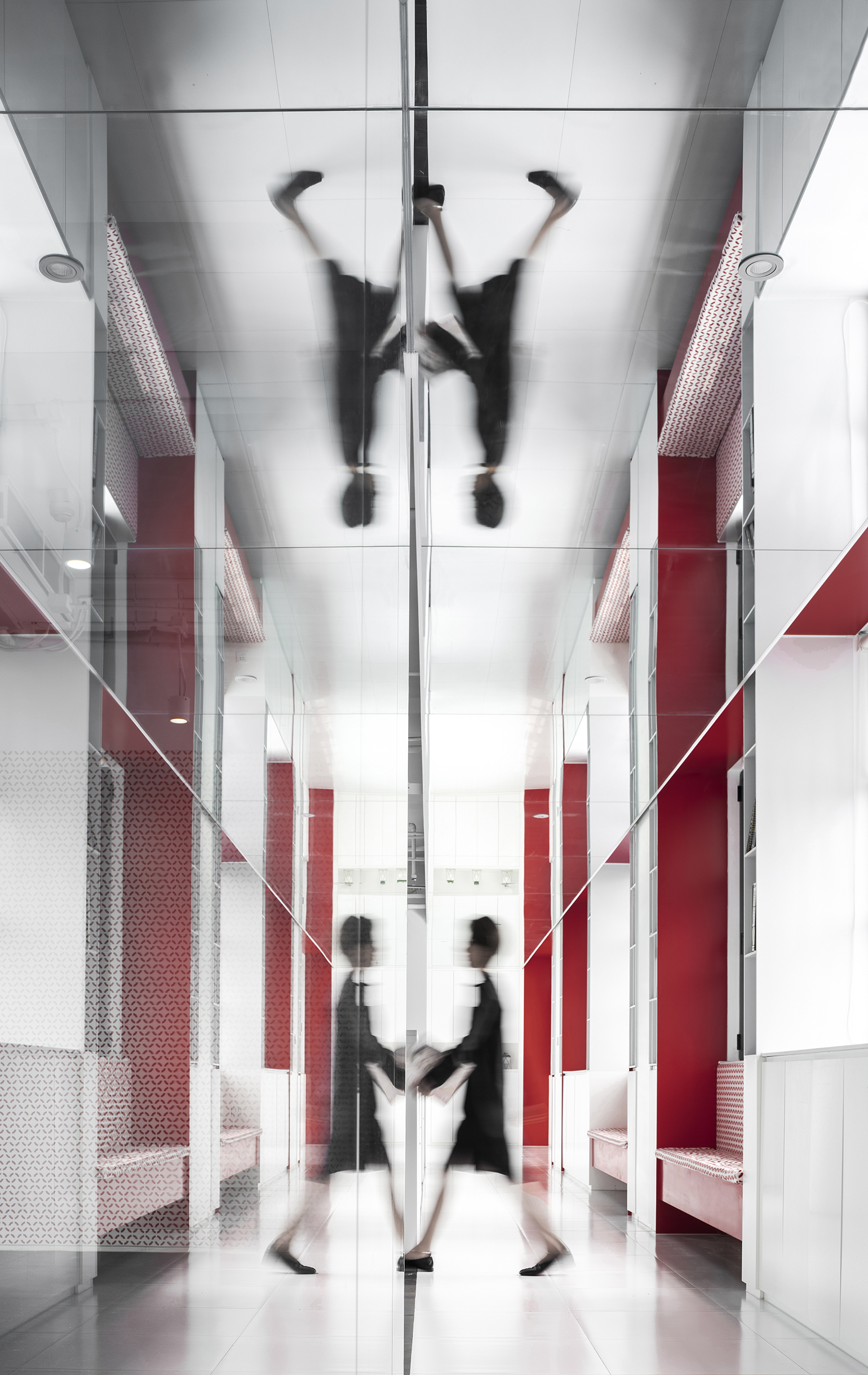
2018年初CUN寸DESIGN收到一个委托,改造UCCA尤伦斯当代艺术中心的室内部分。这部分工作主要包括UCCA的办公区域改造与UCCA 儿童艺术中心。
In the early 2018, CUN DESIGN wascommissioned to renovate the interior of UCCA Center for Contemporary Art. Thework mainly includes the UCCA office renovation and UCCA Kids.
CUN寸DESIGN对UCCA尤伦斯当代艺术中心二至四层空间进行梳理,为了提高品牌文化的在地性,将现有空间进行重新布局。运用最新的UCCA的VI系统,把平面比例复制运用到空间比例当中。
After analyzing and categorizing space from the second to fourth floorof UCCA, CUN DESIGN designed a new layout based on the existing space, so as toimprove the locality of brand culture. The latest UCCA VI system was used tocopy the plan scale and apply it to the spatial scale.
作为物理空间、精神空间与社会空间的统一结合体,根据UCCA自身属性的综合性和独特的认知角度,设计让整个空间都以白色为主基调。
As an integration of physical, spiritual andsocial space, a white palette goes through the whole space according to itscomprehensive character and unique cognitive perspective.
UCCA儿童艺术中心-走廊
UCCA Kids - corridor
并结合原有建筑钢结构的基础上,使空间造型恰好可以让曲线延伸,形成拱形走廊,成为使用者们最常接触的场地和形成进入者与空间之间的关系。
Based on the original steel structure of building, the space shape canprecisely let the curve extend and form an arched corridor, which becomes themost frequently used space, thus forming the relationship between visitor andspace.
02
设计对功能的「退让性」
Design Concession to Function
建筑的二层为UCCA儿童艺术中心,面向2-11 岁儿童,旨在通过引导儿童对艺术的感知、思考、创造及表达,全面开发他们的知行体系,使他们用一种全新的艺术视角来处理自我与外界的关系。每一层的走廊都贯穿了整层的行为动线,优先所需功能的丰富度,优化各功能的体验品质。
UCCA Kids is on the second floor, open for childrenaged from 2 to 11 years old. It aims to fully develop their knowledge system byguiding children's perception, thinking, creation and expression of art, sothat they can use a new artistic perspective to handle the relationship betweenthe self and outside world. Thecorridors on each floor run through the entire behavioral lines, prioritizingthe richness of required functions and optimizing the quality of experience foreach function.
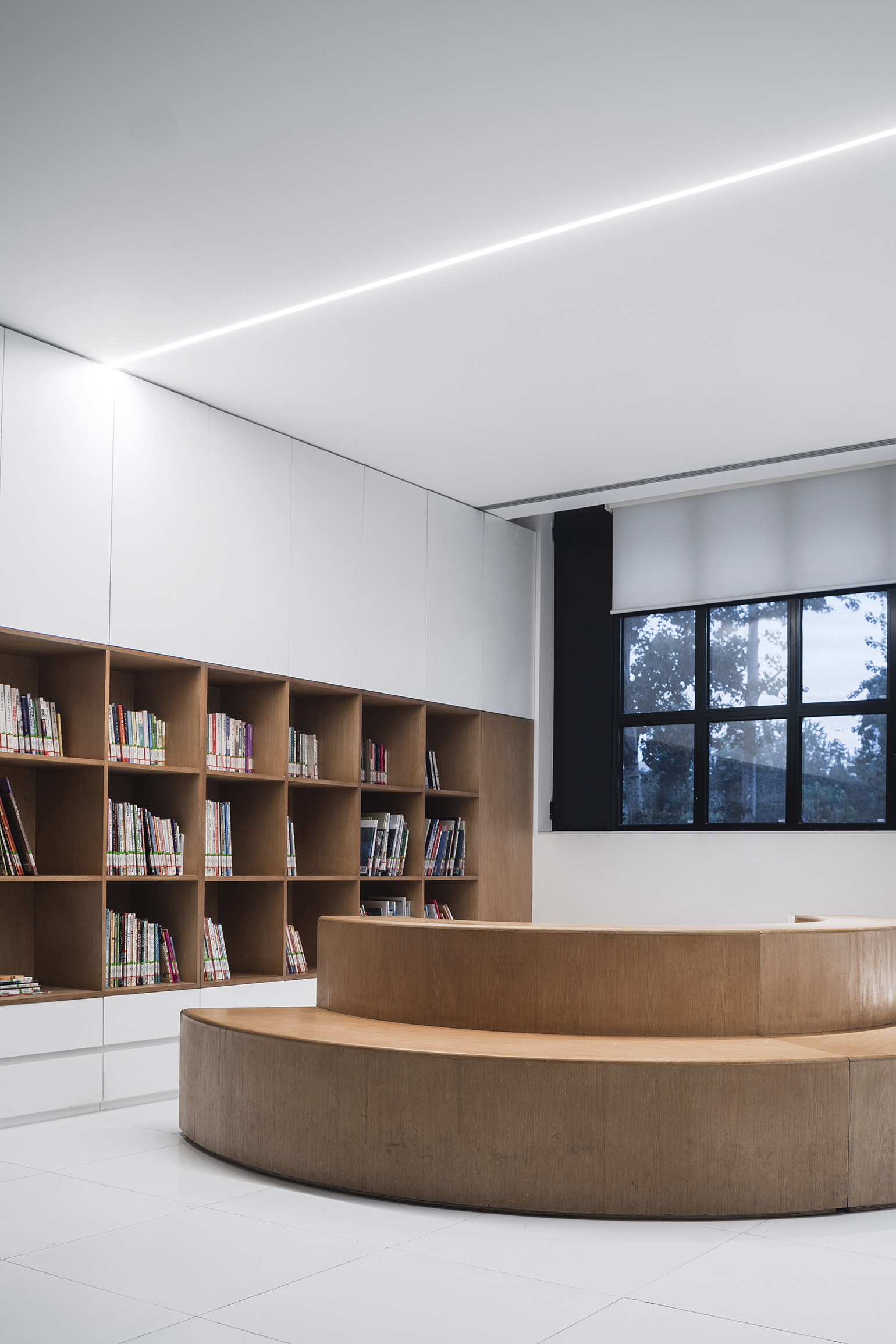
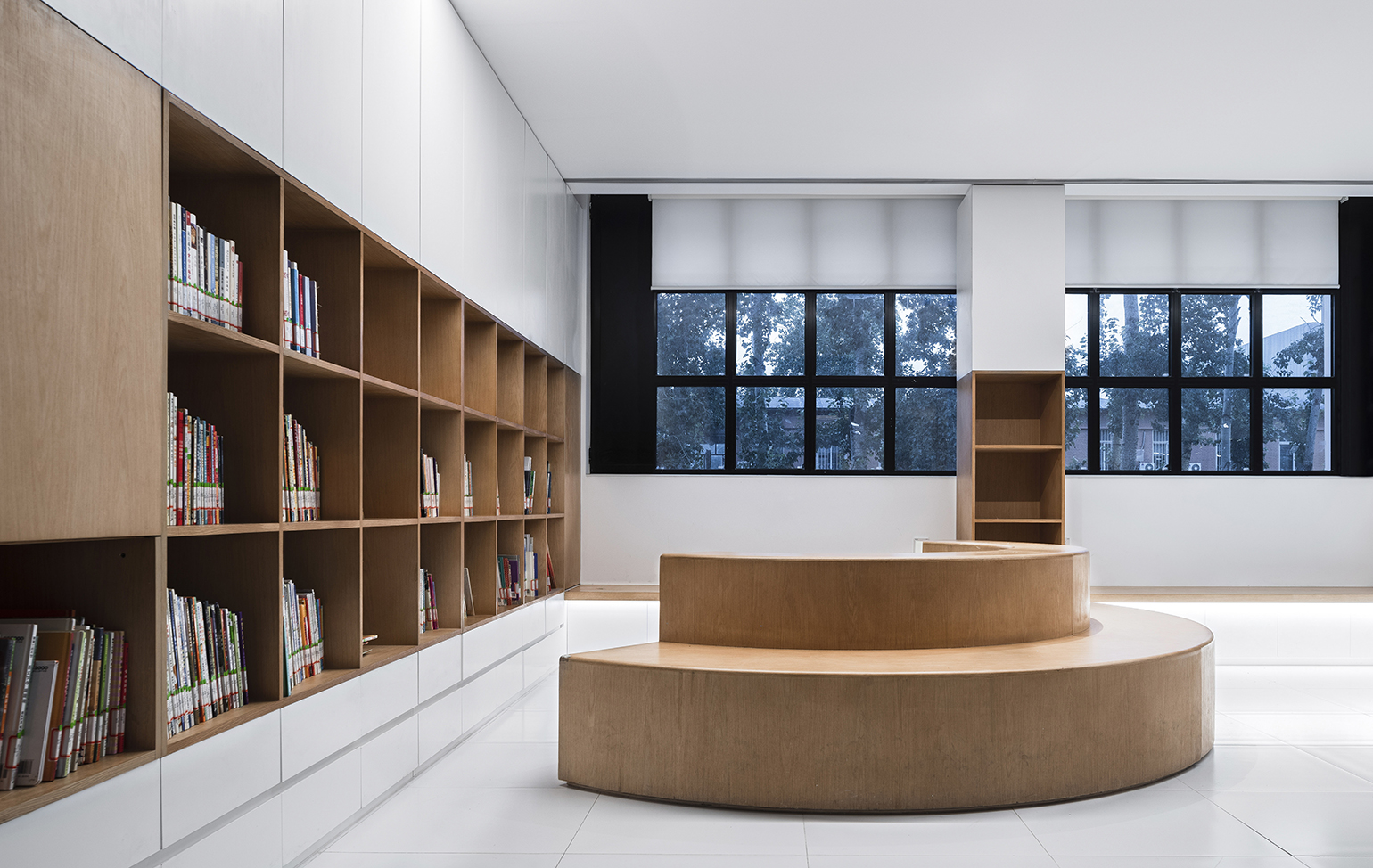
以UCCA的VI系统为造型处理的家长等候区域为核心,左右两侧设置了11间的亲子及儿童教育班,每一间教室都结合了建筑创造的私密性,形成教育独立性,同时又融入在整个大空间中。克制和设计的退让性,把更朴质和更包容的空间留给孩子们自己去想象。
The parents’ waiting area is shaped by UCCA VI system. There are 11parent-child and children's education classrooms set on the left and rightsides. Each classroom has architectural privacy to form educationalindependence while integrated in the entire large space. The restraint and concessionof design leaves children with a more simple and inclusive space to imagine.
设计在整层空间中没有用到一处直射光源,二层所有的光都来自漫反射光源,并且这种光挑选了对儿童保护范围的选择。
No direct light source is used in the entire space, and all the light onthe second floor comes from the diffuse light source, which is selected for thesake of children’s health.
设计师创造了一款可适用于各种课程需要的道具模块,由四种不同长度的构件、连接件组成。利用协同作用的方式,根据实际需要可自由扩张和收缩。
The designer specially created a prop module that can be used for avariety of classes. It consists of four components of different lengths and connectionfittings. Using a synergistic approach, it is free to extend and shortenaccording to actual needs.
Design Coordination to OfficeSystem
建筑的三至四层都属于UCCA尤伦斯当代艺术中心的办公空间,在这次的办公设计中CUN寸DESIGN基于使用数据来插入办公模块,给出了不同工作需求、权限、角色、采访、会话集及角色的层次、协同工作等之间的关系。
The third and fourth floorsbelong to the UCCA office area. In this office design, CUN DESIGN inserted officemodules based on the use of data, providing the relationship between differentjob requirements, permissions, roles, interviews, and the hierarchy of role, aswell as collaborative work, and so on.
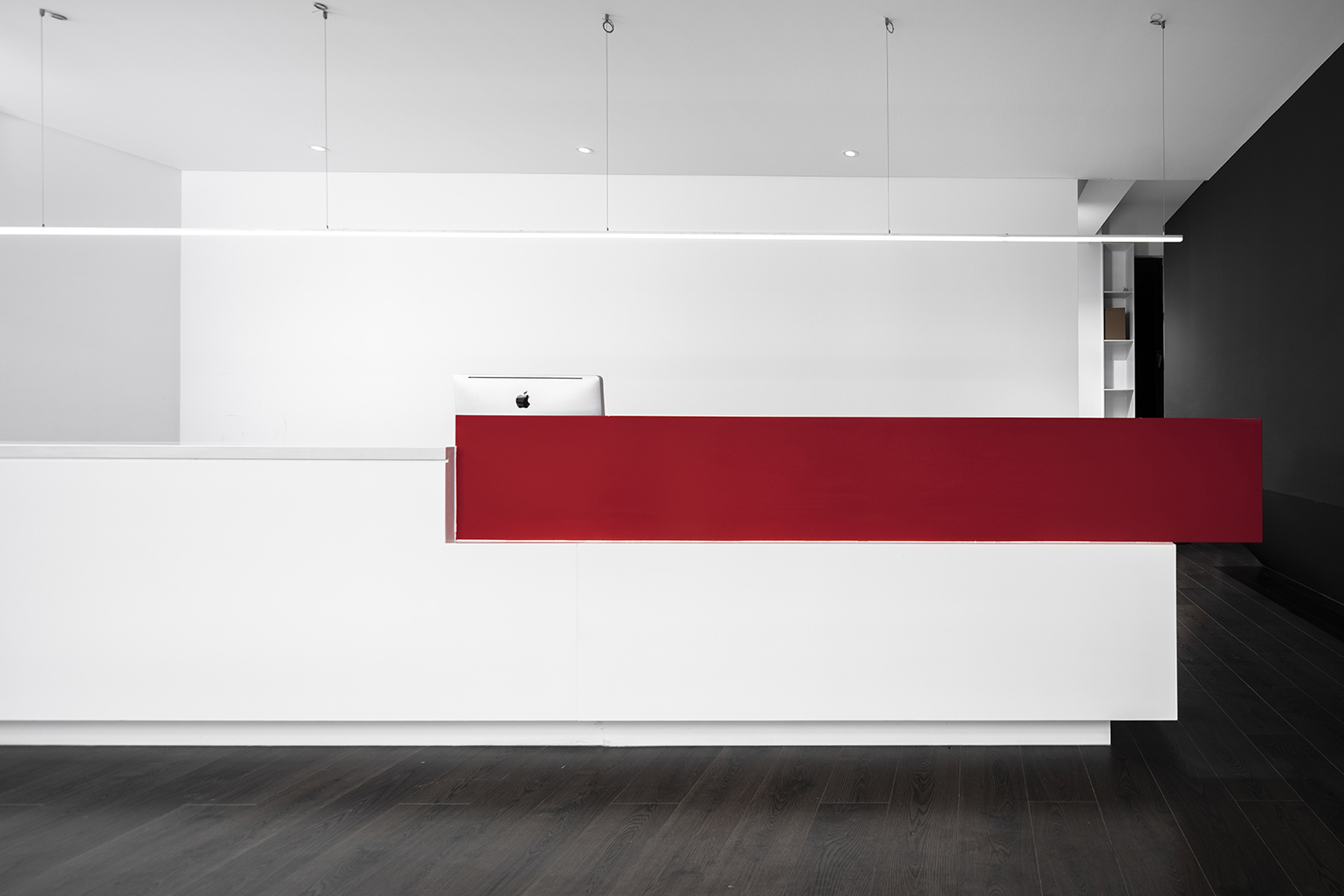
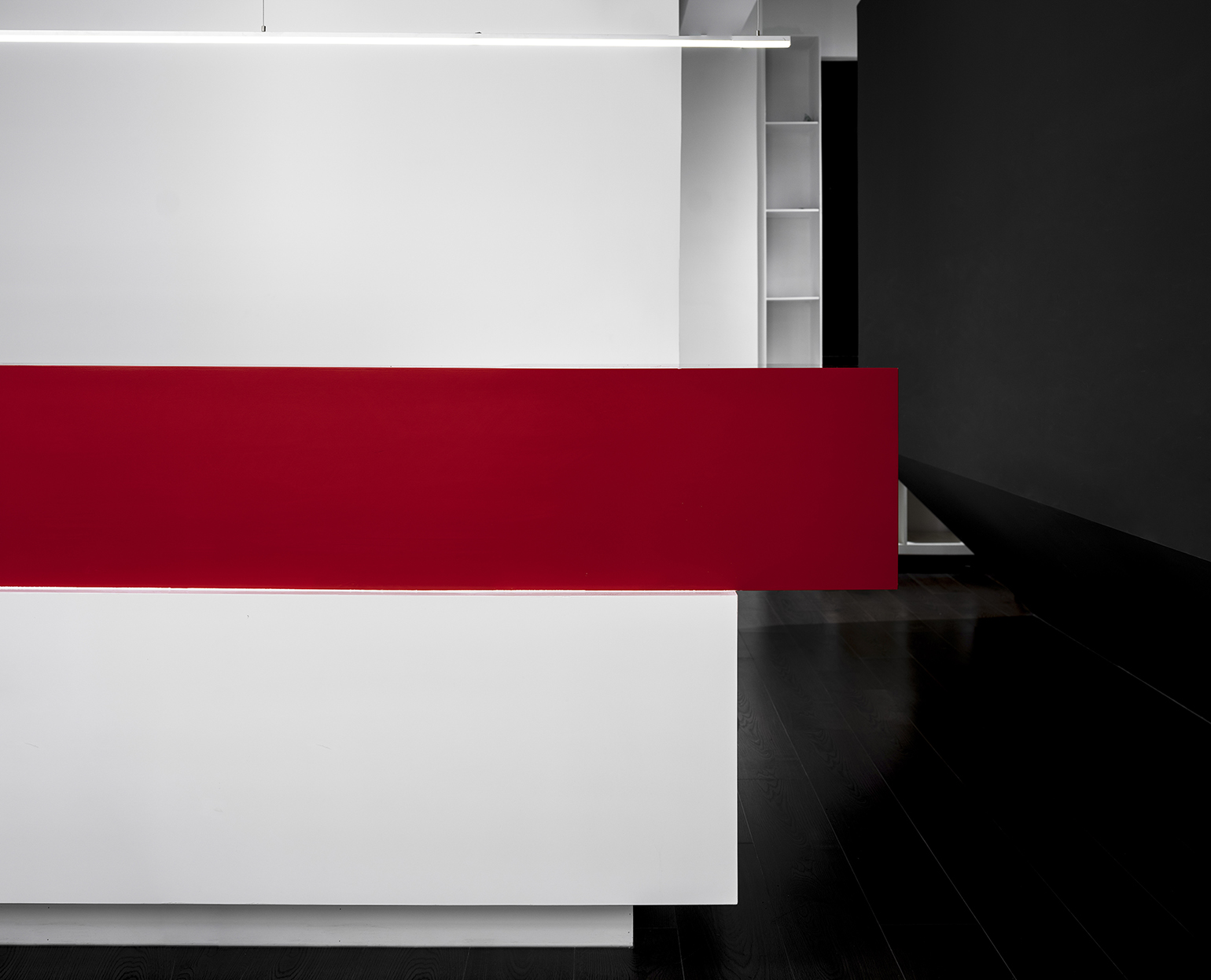
前台区域
front desk area
走廊有品牌文化的同时具备员工休闲区域,贯穿平层对于楼层的约束,每个局部空间打通,让不同空间之间的无缝协同工作。每一个空间都以不同的形式巧妙地衔接起另外的一个空间,使员工、投资人、外来访客都可以在拥有清晰视觉的空间中自由穿行。
The corridor has a brand culture and a staff leisure area. Despite the levellingconstraints, each local space is opened, allowing seamless cooperation betweendifferent spaces. Each space cleverly connects another one in different forms,allowing employees, investors, and visitors to walk freely in a space withclear vision.
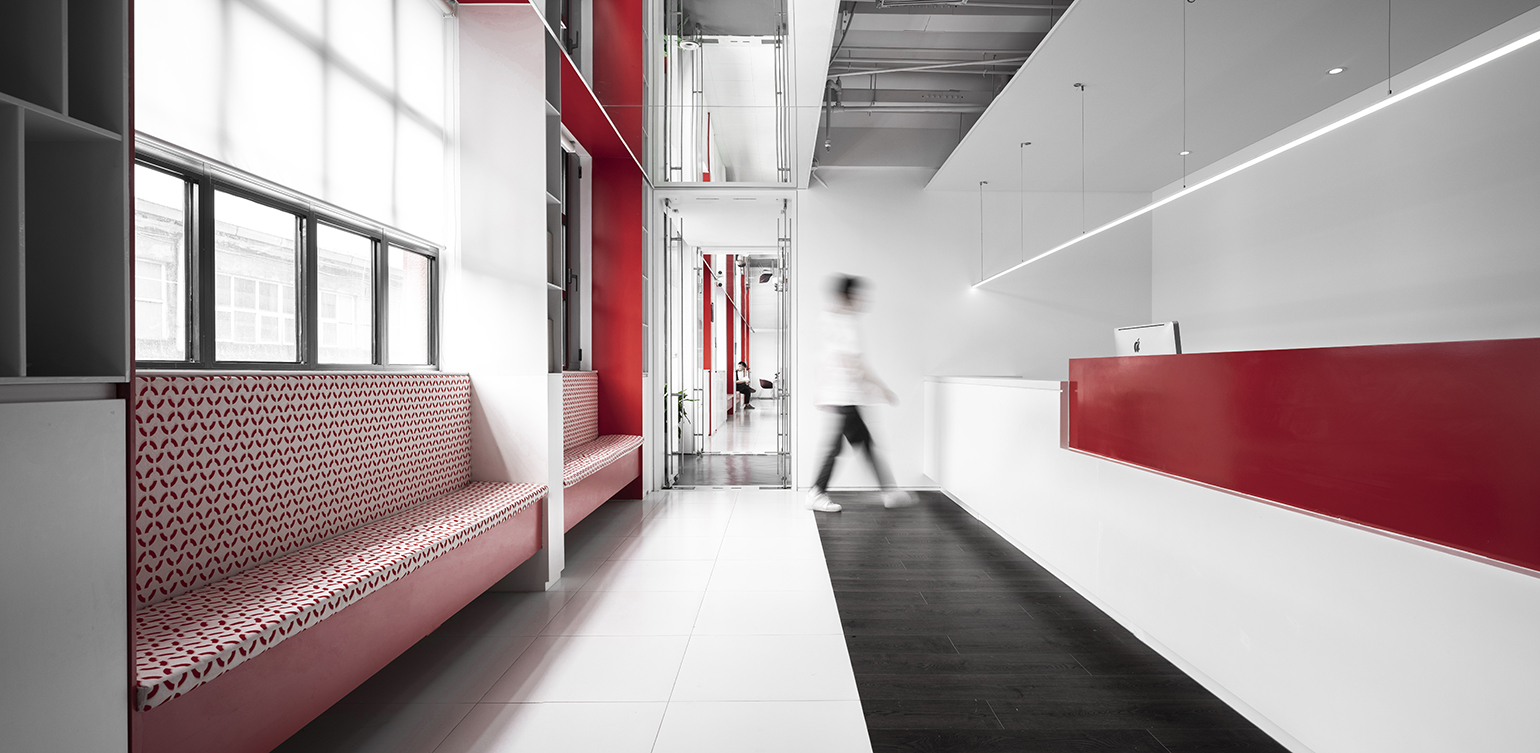
对于办公空间,会发现整个办公环境里这么多人,会产生很多不同的行为。设计师提出一个概念,叫做 “空间调色(Palette of Place)”,把整个公司看做一个整体的环境,里面要能支持各种各样的办公行为,每一个微环境都是要有特殊的功能去支持的。
It can be found that so many people are in anentire workplace, and undoubtedly, there will be many different behaviors. So,the designer proposed a concept called “Palette of Place”, which regards a company as a whole environment. According to thisconcept, the environment must support a variety of office activities, and everymicro-environment must support a specific function.
办公空间
office area
连通会议室的设置
the connection of meeting room
小会议室
small meeting room
录音间
recordingroom
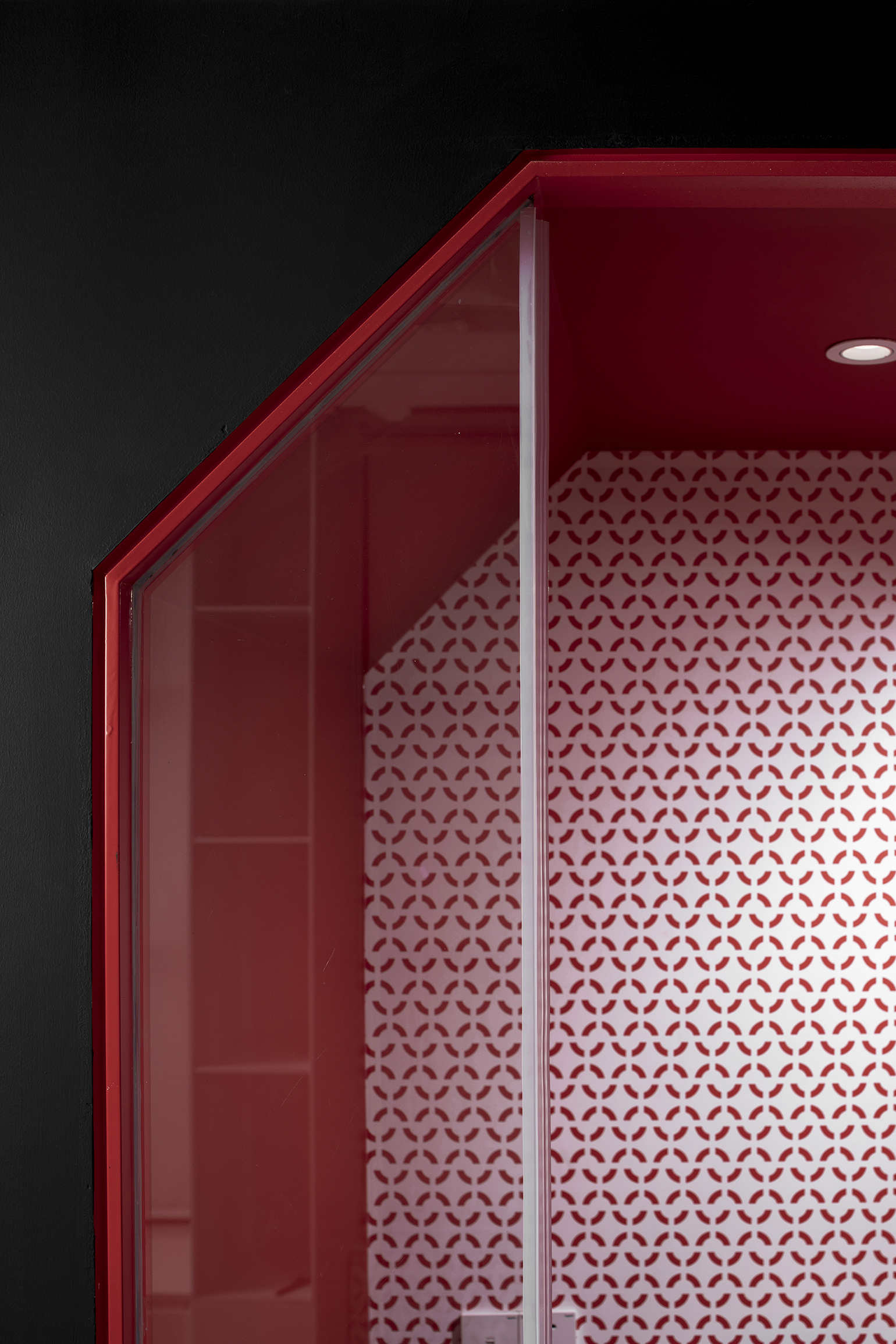
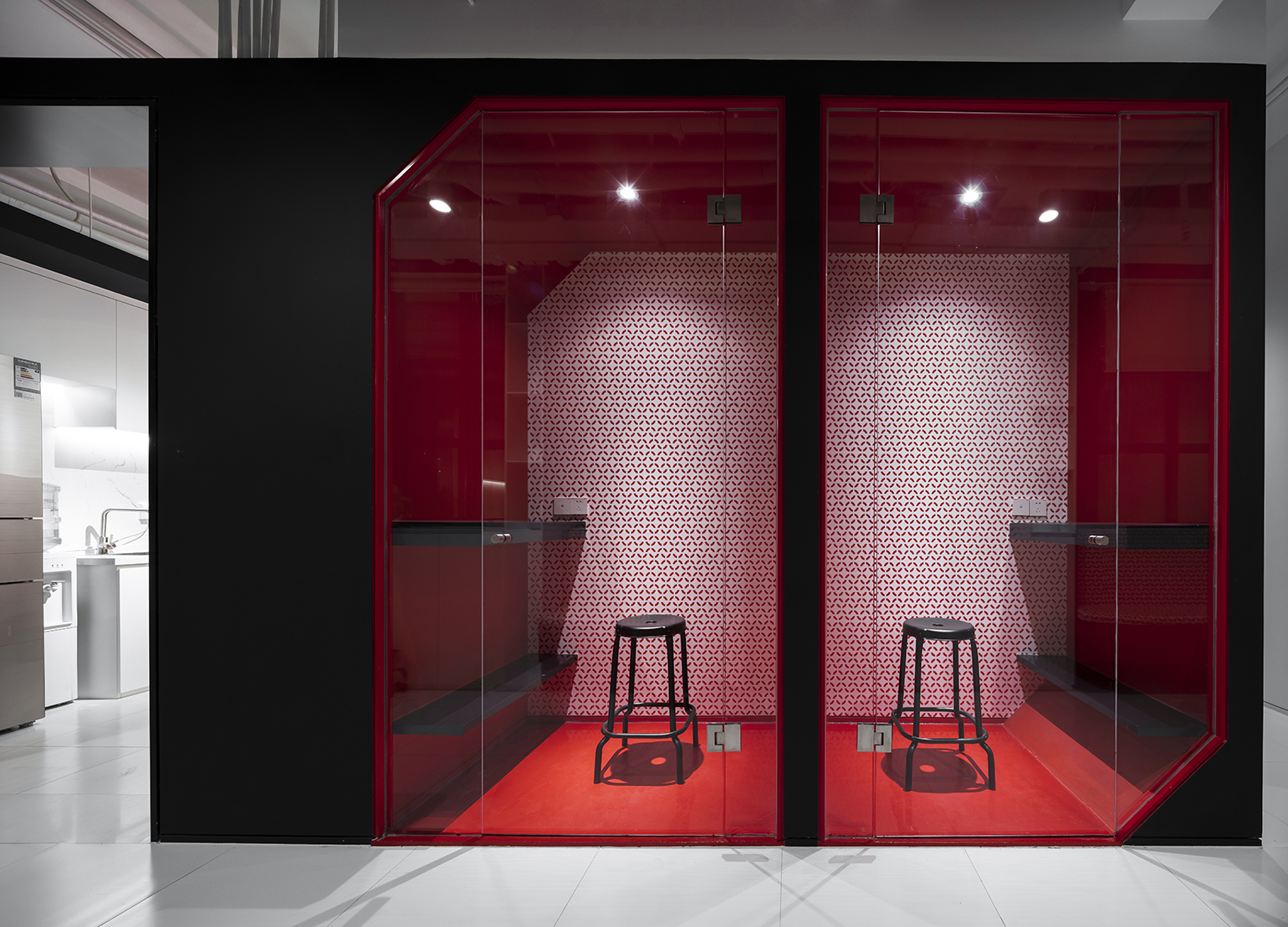
设计最初的目的就是解放使用者在一个空间中的“工作八小时”, 知识工作者需要移动,他们很多时间是不在办公桌前面的,研究发现,最有效率的工作者1/4的工作时间都不在办公室里,他们要么在开会,要么在外面非正式地交流及办公,甚至在参加活动上,因此,空间中提供了不同的办公家具组合,能支持应对不同工种的办工状态。
The initial mission of design was to liberate staff from “eight hours ofwork” in a designated space. In fact, plenty of knowledge workers need to movein working hour. Most of time, they are not at desk. A study found that themost efficient workers haven’t been at office for a quarter of working time.They are either in a meeting or informally communicating and working outside,even at an event. Therefore, the space provides different combinations offurniture to support the working conditions of different types of work.
For the Art Workshop inBeijing
对于UCCA尤伦斯当代艺术中心的设计,更像是把这座“艺术车间”内部调整的更加适合,这才能使它以一种独一无二的身份介入人们的城市生活中,让自己的时间和技能直接转化为生产力。The design of UCCA is morelike an internal adjustment of this “art workshop”, so that it can intervene inpeople's urban life with a unique identity, turning its time and skill intoproductivity.
做办公空间也好,做儿童艺术中心也好,其实最终的依旧是人。空间设计只是一个具有激活属性的道场,这种具有文化输出的地方才是最主要的。站在这里,任时光流逝,当光线透过朝阳的大窗户倾斜(是否是倾泻?)进来,旧彻底旧,新彻底新,当下和未来在同一个空间里凝结。
No matter it is workplace or children’s art center,it is design for people. Space design is to activate nature, but the part withcultural output is the most important. Standing here, as time passes by, whenthe sunlight is pouring into the space through the large windows, the old iscompletely old, and the new is completely new, the present and future being coheredin the same space.
这里是CUN寸DESIGN为UCCA尤伦斯当代艺术中心制作的新衣,致敬。
This is the new dress for UCCA made by CUN DESIGN,Salute.
二层平面布置图
2F Plan
三层平面布置图
3F Plan
四层平面布置图
4F Plan
项目名称:UCCA尤伦斯当代艺术中心办公空间项目及UCCA 儿童艺术中心
项目区位:北京市798
建筑面积:办公空间 1200 ㎡
主案设计师:崔树、刘孝宇、赵亚
项目完工:2019.04
摄影师:史云峰、Tiana
Proprietor:UCCA Center for Contemporary Art
Project area:
UCCA Kids: 720 ㎡
Participating designers :Li Danyang, Zou Chenglin, Jiao Yunqi
Main material: Mirror plane, steel, wood veneer, wooden floor, white floor tiles
Photographer:Shi Yunfeng, Tiana